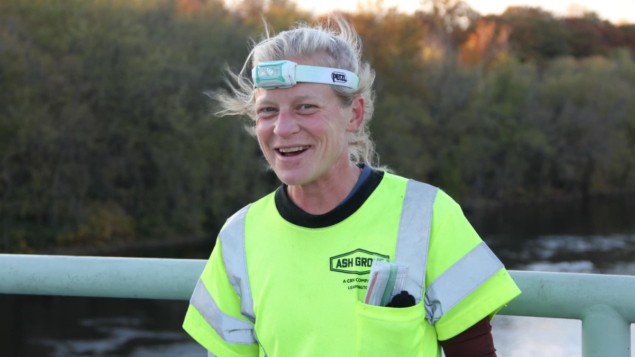
We all know physicists with extraordinary talents that stretch well beyond academia – and Harvard University’s Jenny Hoffman is no exception. She has just become the fastest woman to run across the US. She made the 3000 mile (5000 km) journey in just 47 days, 12 hours and 35 minutes. Astonishingly, she beat the previous record time (by Sara Villines in 2017) by more than one week.
Hoffman, who studies the electronic properties of exotic materials, began her journey from San Francisco to New York City in mid-September. This was her second attempt – in 2019 she got 2560 miles from the California coast before a knee injury brought her to a halt in Ohio. Undaunted by knee surgery, the pandemic and work and family responsibilities, the three-time national champion ultrarunner says she “dreamed every single day for four years about redoing and completing this run”.
You can read more about Hoffman’s extraordinary achievement in this interview with the US’s National Public Radio.
Lots of junk
Ever since humans launched the first artificial satellites into space in the late 1950s, the amount of space junk orbiting our planet has been increasing. Today, there are about 20,000 pieces of this space debris that can be tracked and scientists believe that there are many more bits of junk that are too small to see.
Some of this space junk poses a real risk to satellites and even to astronauts on the International Space Station (ISS). NASA’s Space Shuttles have been damaged by impacts and ISS crew members have been advised to shelter in a safe area on a few occasions when debris threatened the spacecraft.
So, you might be surprised to hear that two NASA astronauts have added to this space junk by losing a bag of tools while out on a spacewalk doing routine repairs on the ISS. According to NBC News, Jasmin Moghbeli and Loral O’Hara lost control of the tool bag about two weeks ago and it has since been spotted by ISS crew members – who say it is orbiting Earth slightly ahead of the ISS. According to mission control, the bag does not pose a danger to the space station.
The ISS reflects sunlight back to Earth and is the third brightest object in the sky (after the Sun and Moon), so it can be easily observed with the naked eye here on Earth. The tool bag is much dimmer, but the amateur astronomer Dave Dickinson told NBC that it could be visible when viewed through binoculars.
Bright objects
There are a growing number of commercial satellites orbiting Earth, and astronomers are becoming increasingly concerned that the light they reflect, and the radio signals they broadcast, are degrading our view of the cosmos. In the latest episode of the Physics World Weekly podcast, I chat with two astronomers about BlueWalker 3 which is the brightest commercial satellite in the sky – and what could happen when many more of the prototype design are launched.
- SEO Powered Content & PR Distribution. Get Amplified Today.
- PlatoData.Network Vertical Generative Ai. Empower Yourself. Access Here.
- PlatoAiStream. Web3 Intelligence. Knowledge Amplified. Access Here.
- PlatoESG. Carbon, CleanTech, Energy, Environment, Solar, Waste Management. Access Here.
- PlatoHealth. Biotech and Clinical Trials Intelligence. Access Here.
- Source: https://physicsworld.com/a/physicist-runs-across-us-in-record-time-nasa-tool-bag-joins-growing-field-of-space-junk/



